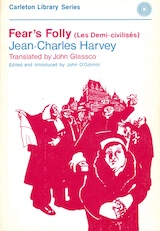of Lists
Jeremy Brown and David Ondaatje
Scarborough: Signet, 1979
391 pages
The First Original Unexpurgated Authentic Canadian Book of Lists isn't terribly original in that it owes its concept, format, and very existence to The Book of Lists, David Wallechinsky, Irving Wallace and Amy Wallace's runaway American bestseller.
As a teen, I had a copy of The Book of Lists (1977) and its first sequel, The Book of Lists 2 (1980), but never bought the Canadian cash in. My guess is that I never saw a copy; it would've certainly appealed to my nascent patriotism.
Does the The First Original Unexpurgated Authentic Canadian Book of Lists contain "1001 AMAZING FACTS, QUOTATIONS, ANSWERS, OPINIONS, AND STATISTICS" as claimed on the cover?
Depends on how one counts, I suppose.
Frankly, I think Signet was selling its authors short. The book features over 350 lists divided into twenty-one categories. At 43 pages, "Sports" is easily the longest. "Private and Confidential," five pages, dealing with the bedrooms of the nation, is the shortest by far.
Nowhere near long enough and over all too quickly.
The longest, THE 16 GREATEST PROBLEMS FACING LAW ENFORCEMENT AGENCIES IN CANADA, comes courtesy of His Honour Judge Philip Givens, Chairman of the Board of Commissioners, Metropolitan Police Force. The shortest, as short as a list can be, is credited to Claire Wallace, author of Mind Your Manners: 2 IMPORTANT ITEMS OF NATIONAL ETIQUETTE CANADIANS SHOULD RESPECT.
The majority, an even three hundred lists, have ten entries each. These alone suggest 3000 facts... or maybe not. The First Original Unexpurgated Authentic Canadian Book of Lists is at once a fact-checkers nightmare and a walk through a different time. Let's take a stroll through the first five:
1. 10 GREAT CANADIAN QUOTATIONS ON CANADIANS
The book's first list contains the first two errors: Northrop Frye is referred to as ""Northrup Frye." Susanna Moodie is "Susanna Moddie."
2. 10 CANADIANS WHO DIED TOO YOUNG
The errors in the second list are numerous. Norman Bethune was born in 1890, not 1899. The doctor was forty-nine when he died. John Sparrow Thompson, our fourth prime minster, was born in 1845, not 1844. Tom Thomson met his end at thirty-nine, not forty. Tim Horton died in February 1974, not September 1974. At the time of his murder, Pierre Laporte held two ministerial portfolios, not one. George McCuklagh, the publisher who married the Toronto Globe and Mail and Empire, did not die in an accident, rather he took his own life. Bill Barilko was killed more than four months after scoring his legendary goal, which I would argue was not "almost immediately after the game."
The book's third list comes courtesy of Peter C. Newman, then Editor of Maclean's. His number one is John Turner, after whom we find Conrad Black. Number three is Brian Mulroney: "Bicultural, brilliant, and beautiful, he is the dream incarnation of the Conservative party. Some day they'll realize it and he will become Prime Minister of Canada." This is, of course, the very same beautiful man who would one day tell Newman to go fuck himself.
For anyone who cares, Toronto's York Club tops the list.
1. PIERRE ELLOTT TRUDEAU, prime minister2. RENÉ LÉVESQUE, Quebec premier3. FRANCIS FOX, former Solictor-General4. GORDON LIGHTFOOT, singer5. PETER WORTHINGTON, Editor-in-Chief, The Toronto Sun6. ADRIENNE CLARKSON, television performer, author7. CAROLE TAYLOR, former television star8. PETER C. NEWMAN, Editor, Maclean's Magazine9. LYNNE GORDON, broadcaster, head of OntarioWomen's Task Force10. JOYCE DAVIDSON, television broadcaster
- three of the 10 GREAT CANADIAN QUOTATIONS ON CANADIANS were made by women;
- all 10 CANADIANS WHO DIED TOO YOUNG are men;
- two women feature in 10 PEOPLE MOST LIKELY TO INFLUENCE THE COURSE OF EVENTS IN CANADA, one of whom is the list makers's 14-year-old daughter;
- THE 10 MOST EXCLUSIVE MEN'S CLUBS IN CANADA.
The First Original Unexpurgated Authentic Canadian Book of Lists was first published in 1978 by the late Pagurian Press. I've yet to stumble upon a copy though one – and only one – is listed for sale online at $8.00. Likewise, just one copy of the Signet edition is listed. Price: $10.00.
My copy was purchased three years ago. It set me back $2.00.














.jpg)































